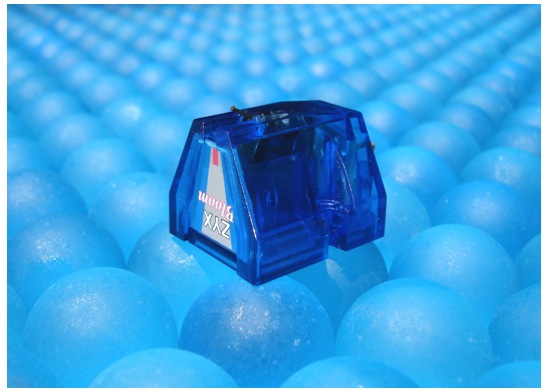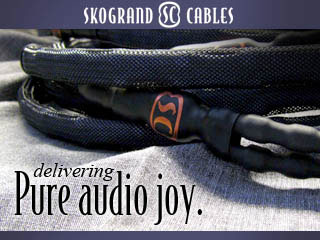[A]s I have noted in previous reviews, famed craftsman Hisayoshi Nakatsuka has been at the cartridge designing and building business for quite a long time. As such, over these many years, Nakatsuka-San has refined his designs and assembly processes to the point where each and every cartridge emerges with the characteristics that immediately identify them as designs by Nakatsuka-San. That sort of consistency is rarified in a cottage industry and even within just a single line of models from the same manufacturer.
As mentioned in the previously published review of the ZYX R100 Yatra, Mehran of SORASound has been so kind as to provide me with incredible access to the world of ZYX and the designs of Hisayoshi Nakatsuka. In this review I will be focusing on the entry level cartridge of what has proven to be a broad and deep line of overachievers from ZYX. The ZYX R50 Bloom is available in three flavors, a low output (.24mv) version, a higher output Bloom–H (.48mv) version, and the R50 Bloom MONO. The standard low output R50 Bloom with an MSRP of $995 is the subject of this review.
The configuration of the ZYX Bloom sports the proprietary “Real Stereo” generator system that is found in all of Nakatsuka-San’s designs, plus copper coil wires and has an output level of .24mv. The rest of the specs however harken back to Nakatsuka’s earliest designs for Accuphase. The ZYX Bloom sports an aluminum tube cantilever that has a coating to reduce resonances. There is a Line Contact diamond stylus fitted at the end of the cantilever; an essentially similar arrangement to the one employed in Nakatsuka-San’s Accuphase AC-1 design over 30 years ago. The outer body is a blue plastic translucent trapezoidal body. The ZYX Bloom is fitted with the now ubiquitous silver platform as is found on most other ZYX models; I understand it is an available option, but SORASound includes it for all Bloom’s. The entire cartridge weighs in at a total of just under 7.6 grams.
The Technics EPA-A501G high mass wand proved to be exactly what the doctor ordered in optimizing the performance of the ZYX Bloom in this tonearm system. I used a vertical tracking force of 2.0 grams for the entire review period.
The break-in period for the ZYX Bloom was brief as was the case with the R100-Yatra. It took all of about 20 hours for bass to firm up, for images to sharpen, and for tracking ability to improve. Also as was the case with the R100-Yatra, the ZYX Bloom actually sounded very good straight out of the box.
Listening to the properly installed and optimized ZYX Bloom resulted in an entertaining and nostalgic series of sit-downs. As it turns out, this isn’t exactly your typical modern ZYX in parts and materials nor is it at all typical in sonic signature. The ZYX “Real Stereo” motor provided the usual superb stereo separation, excellent transparency, and image focus, width, and height. From that standpoint alone, this entry level cartridge did not sound at all entry level. Indeed, the ZYX Bloom couldn’t help but reveal its true lineage LP after LP and yet, its true colors emerged with a sonic palette that is simply atypical of a modern ZYX. In short, the “Bloom” is an apt name for this expressive little cartridge.
Thanks to the aluminum cantilever and line contact stylus, the cartridge has a slight glowing nature in the midrange that is hard to resist, as well as a lushness in tone when reproducing cymbals, wire brushes, and chimes. I’ve been a sucker for cartridges with this signature for many years; for example such as the Technics EPC-205C, Accuphase AC-1, and even the original Miyabi MCA. While being very different in form and in performance, the ZYX Bloom shares that same bit of sonic charm that sucks me right in. I have always believed it to be the material used in the cantilever. I have found that high end moving coil cartridges with aluminum cantilevered and titanium cantilevered stylus assemblies have a slightly slower and romantic quality to their midrange and a lushness in their highs. In the case of the ZYX Bloom, designer Nakatsuka-San endeavors to temper this effect by applying an outer coating to the cantilever in order to stiffen the material and reduce the effect. Joseph Grado used a very similar technique in his famed handmade Signature Series cartridges back in the day. Suffice it to say that the ZYX Bloom was already well on its way to proving its chops.
Spinning the Vinyl
In order to set the perspective for a true cartridge showdown one Sunday afternoon, I listened to the ZYX Yatra and then hot swapped the pre-mounted and balanced ZYX Bloom. Going back to the main points I had made in my notes regarding the ZYX Yatra, I played the same selections on both Yatra and then Bloom. Level matching was not an issue since they both have the same output level of .24mv.
I first rolled through a few cuts from the suite of Gentle Giant albums I mentioned in the ZYX Yatra review, In a Glass House, Octopus, and Acquiring the Taste. In this round of listening, the ZYX Bloom proved to have a slightly mellower or softer presentation to dynamic swings than the ZYX Yatra. For instance, the song “Way of Life” from In a Glass House was reproduced with a slightly laid back presentation and the visceral bass drum kicks were not as deep, nor were they as explosive as with the Yatra. That said, the ZYX Bloom also surprised the heck out of me with its ability to track these LP’s without so much as a hint of strain. Neither cartridge failed the “skip” test in the song “River” from the Octopus LP. This, to me, was absolute confirmation that the chosen tonearm wand was appropriate for the ZYX Bloom. Stereo separation and image height on the ZYX Bloom was stellar and on par with the ZYX Yatra.
In fact, in total lock-step precision, LP after LP, such as in Janis Ian’s Breaking Silence, Peter Gabriel’s, New Blood, and In a Glass House, the ZYX Bloom did not fail to deliver excellent performance without so much as a hint of unwanted distortions, response aberrations, or any such mechanical failings related to tracking ability. No, it did not deliver the bass depth nor dynamic impact as did the ZYX Yatra when playing back “Rhythm of the Heat” from PG’s New Blood; nor did I expect it to. It did add a very slight touch of mellowness in the midrange of most recordings that was not at all unpleasant and worked very well with strings and female vocals.
- (Page 1 of 2)
- Next page →




Hi Ray –
Thanks for the review. I’m currently using the Sumiko Evo III Blue Point Special with my Rega P3/24. I know the cartridges needs to be reset by a pro but I’m not sure I can say I’ve been 100% happy with the cartridge. While very good, it is a little to harsh for me, and now, with the amps and gear I have, vinyl has a glare in the upper mid-range that is prohibitive to full music enjoyment. It is almost like the cartridge puts too much gain in the system. Even with the phono amp set correctly for its specs.
This Bloom sounds intriguing because I too have a similar soft spot for a lush mid-range and high end. Do you think the P3/24 would be too much of an under performing table for this cartridge? Also I am using the SimAudio Moon LP3, a highly reviewed solid state phono amp, but entry level for sure. ($500). Thoughts, and if say, I were to go after a higher end phono amp to pair with a cartridge like the Bloom, could you make some suggestions?
Hi Adam,
Your comments regarding the BPS Evo III pretty much mirror my impressions of the original BPS which I owned for a VERY brief period of time.
I already had a top flight tonearm, turntable, and phono preamp (Audible Illusions Modulus 3A with the John Curl board), so I ca only conclude that this may possibly be the true nature of the BPS and its more modern iterations.
I honestly do not know enough about the Rega’s signature to provide you with an opinion. Ironically, I will be reviewing an entry level turntable in the coming months that may prove to be just the ticket for serious entry level performance. That’s all I’m prepared to say until I get in in my home.
The SimAudio is a nice entry level phono and at that price level I’m sure you can do “different” but not necessarily better, IMHO.
While there are plenty of phono stages out there that I have not had the pleasure of hearing in my home such as the attractively priced Manley Labs Chinook, I was always impressed with the overall signature and excellent musicality of the ASR Mini-Basis Exclusiv. That said, its price tag has blossomed over the years. I bought it in the days when it could be had for under $1,200. The ASR is solid state, but you would never know it. It has nice rhythm and pace, it’s a touch overripe in the bottom if you are not careful to match up the right powercord for it, and it can get noisy to the point where you could mistake it for tube rush! Overall though, I thoroughly enjoyed my time with it.
Good luck on the journey!
Cheers,
Ray
rseda@dagogo.com
https://www.dagogo.com
Hi Ray, nice review. Which phono preamp were you using for this test? Was it the ASR Mini? I was curious as to what settings on your preamp did you find the best with the low output ZYX Bloom? It’s rated at a very low 4 ohms, the cartridge. I was taught the rule of x10. 10 x 4 ohms is 40 ohms. Did you set your phono preamp below 100 ohms? I see the ASR can go all the way down to 22 ohms! Amazing. The reason I ask is that my phono preamp can only go down to a 100 ohm setting. It has plenty of gain of 70 DB, but I am wondering if the low output .24 Bloom would match up alright with my phono preamp? Or would the higher output .48 and 8 ohm version of the ZYX Bloom be a better fit? Thanks for your help.